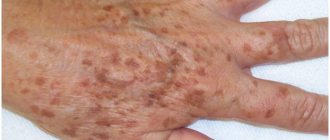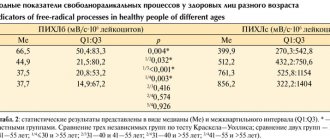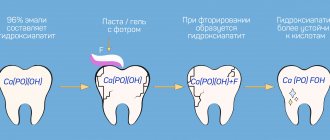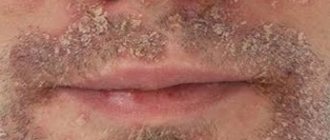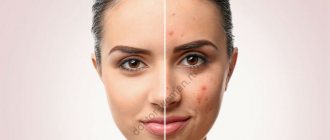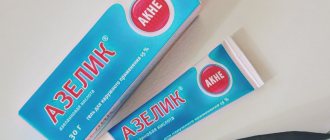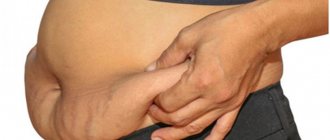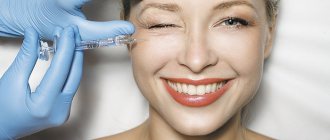The skin is a protective barrier of our body, which takes on the aggressive effects of the environment. The skin subtly senses and immediately reacts to the slightest change in the body's hormonal system. Age-related fluctuations lead to changes in subcutaneous adipose tissue and a decrease in muscle tone. The skin begins to lose moisture, becomes thinner and loses its ability to regenerate.
As we said, the skin is a hormone-dependent organ and all hormonal and age-related changes that occur in the body directly affect its condition.
Let's consider the person's age and the condition of his skin at this moment.
— From six months of age until puberty, the skin practically does not require special care;
— From 12-14 years old, the appearance of the skin begins to change (the activity of the sebaceous glands increases, acne)
- From 20-30 years old - a period when teenage skin problems are in the past and she feels a stage of stability. At this age, a healthy appearance is observed, the skin is tightened and fresh.
— From 25 to 35 years of age, the renewal of the stratum corneum in the skin begins to slow down, the rate of formation of collagen (a fibrillar protein that forms the basis of the body’s connective tissue, ensuring its strength and elasticity) and elastin (a protein that promotes the regeneration and restoration of skin cells) begin to appear the first wrinkles under the eyes, the first age spots may also begin to appear, skin defects begin to accumulate (acne spots, stretch marks, scars).
— In the period from 35 to 50 years, intensive skin aging begins. With each subsequent year, its ability to retain moisture decreases. The amount of hyaluronic acid also decreases, the process of cell renewal of the stratum corneum slows down, the fat layer becomes thinner, pigment spots appear, blood vessels dilate and wrinkles appear.
This period is the most important period of active and proper skin care.
- From the age of 50 under the influence of the onset of menopause, as well as due to a decrease in estrogen in the body. At this age, the fastest process of skin aging occurs. The thickness of the dermis and epidermis decreases and all signs of skin aging begin to appear, especially those that have lacked care.
— From the age of 60, a period of relative stability begins. The condition of the skin during this age period and its further condition will depend on how you took care of it throughout the previous period. It’s too late to start radically saving your skin with cosmetics at this age.
- From 70, the skin has a thickened stratum corneum, thin dermis and low elasticity, deep wrinkles and folds, sebaceous and sweat glands atrophy.
Natural and premature aging
For each person, the withering process starts at different times, depending on genetics and other factors. Knowing this, “youth” can be extended and signs of age-related changes can be significantly reduced. The elimination of negative environmental influences and lifestyle correction also play a role. Having considered the totality of a whole range of reasons, we can come to the conclusion that some people may look their age, others older, and some younger.
On average, a person grows and actively develops until he is 25 years old, then the reverse process begins - withering. It progresses from barely noticeable signs to the appearance of deep facial wrinkles. The functional reserves of the body in the third decade are still quite high, renewal in it proceeds quite quickly, which makes it possible to ensure an acceptable level of cellular regeneration in the superficial layers of the epidermis as well. Then systematic support and special care are required to prevent early and premature aging of the facial skin.
The process is negatively affected not only by hereditary causes, although they are considered leading. In women, hormonal levels are much more important. It depends on it how long it will be possible to maintain the freshness and elasticity of the skin, a sufficient level of humidity, to avoid the formation of a fine mesh around the eyes and in the nasolabial folds, as well as to have tightened contours of the oval and an aesthetic appearance of the décolleté area. It is worth considering that, first of all, your hands give away your age, so caring for them should be almost more thorough than for other parts of the body.
What are the reasons
In addition to general biological factors - the natural processes of aging of the body, external causes also have an influence:
- ultraviolet irradiation for intense tanning;
- prolonged smoking;
- pathologies of internal organs;
- insufficient skin care.
The harmful effects of smoking are especially noticeable in women
Features of aging facial skin
The process of withering is almost invisible to the person himself. But those around you involuntarily note that the bright blush and even tone are gradually giving way to pallor and a network of wrinkles. With unfavorable heredity, changes are noticeable earlier. They are expressed in the correction of the thickness of the skin. If they were thin, they will become even more vulnerable, and the epidermis, prone to oily and combination type, will become rougher.
A slowdown in cellular renewal and a decrease in the production of elastin and collagen leads to changes in the contours of the face, the appearance of sagging areas, sagging, and fragmented pigmentation. The question of how to slow down, stop and prevent skin aging is beginning to worry the fair sex more and more, especially since due to the thinning of the hydrolipid layer, the epidermis retains natural moisture less well, which provokes increased dryness. In this case, useful substances are consumed faster, which leads to their deficiency in the body.
The weakening protective functions of the skin do not allow us to adequately and quickly respond to aggressive environmental factors and resist them. Cosmetologists and dermatologists warn that it is necessary to use high-quality skincare cosmetics with a rejuvenating effect, such as Laennec or Curacen, the effectiveness of which has been confirmed by experts and numerous positive reviews.
Liver diseases
As women age, liver diseases worsen, and liver cirrhosis is no less common in women than in men. Infectious viruses are the first cause of disease. Hepatitis B is dangerous because it appears only at the stage when liver cirrhosis has already developed. The organ does not have nerve fibers, so the pain threshold is very blurred. Stress also negatively affects liver function, and women are less resistant to stress than men. Antibiotics can also cause kidney disease, as can toxins that accumulate in the body under the influence of unfavorable conditions. In women working in hazardous work, after 40 years of age, the risk of liver cirrhosis increases. Pregnancy and childbirth also provoke the development of liver dysfunction. Regular urine and blood tests, as well as ultrasound diagnostics, help identify organ pathologies at an early stage, which does not require surgical intervention.
The first signs of facial skin aging
At the age of 25-30, visible changes begin. With age, the cycle of epidermal change almost doubles, which becomes noticeable first at the level of tactile sensations, and then in the mirror. At the same time, moisture evaporation accelerates, which provokes tightness and increases peeling. Then the process gains momentum, dark circles and bags appear. If earlier they signaled overwork or lack of sleep, now they indicate obvious disturbances in the functioning of internal organs and the not very rosy state of the epidermis.
By the age of 50, the process accelerates, following a cumulative principle. Previously manifested signs of facial skin aging in women worsen, and a number of new ones appear. These include:
- loss of clarity of contours;
- the appearance of so-called jowls and folds around the neck;
- slowing down the production of hyaluronic acid;
- increased sensitivity to sunlight and temperature changes;
- reduction in the amount of moisture, difficulty retaining it;
- less sebum production by the sebaceous glands;
- slowing down the regeneration rate.
Many scientists and cosmetologists are looking for ways to get rid of aging facial skin. So far, no one has succeeded in this, but clear patterns have been identified to slow down the process.
To do this, you need to eliminate unfavorable factors. These include smoking, poor environmental conditions and unbalanced nutrition. A person can do this on his own; for the rest, the help of specialists with appropriate qualifications is required. Competent selection of products for comprehensive care is especially important. In this case, a mistake will be very expensive; if you have the slightest doubt, it is better not only to refuse the cream or tonic, but to first consult a cosmetologist.
Anti-age drugs
Curacen Essence (20 fl x 2 ml)
Laennec – solution for injection
Bb Laboratories – Serum “Arcanum”
Premium set “Ideal facial skin. Healthy tone"
Types and types of facial skin aging in women and their characteristics are conventionally divided into several main groups. Each is characterized by specific external manifestations, which are taken into account to develop directions, select measures to maintain beauty and prevent early fading.
- “Tired” aging is characterized by drooping features, downward-pointing corners of the eyes and lips, which provokes constant overwork, smoking, stress, and lack of sleep. Manifestations of this type are especially noticeable in the evening. A review of your daily routine, nutritional principles, and regular deep facial massage will help correct the situation.
- “Wrinkled” aging is indicated by a clearly defined mesh pattern on the face and neck. In most cases, the prerequisites are genetic; insufficient hydration aggravates the process. It is necessary to reliably protect the skin from the harmful effects of wind, UV radiation and temperature contrasts; among skin care products to prevent skin aging, preference is given to moisturizing creams, fluids and serums with a high degree of penetration into the epidermis.
- Age-related deformity is most noticeable in those who have excess subcutaneous fat. Under its weight, the contours begin to blur, a double chin forms, and puffiness under the eyes. For correction, it is advisable to use cosmetics that have a lifting effect and stimulate the synthesis of elastin and collagen fibers.
- The combined type is the most common. It combines most of the characteristics of previous species, but not so clearly. Skin aging is characterized by a decrease in the elasticity of soft tissues and the formation of wrinkles. Cosmetologists recommend peeling, mesotherapy, and hyaluronic acid injections.
- Late manifestation of age-related changes is typical for older people, when the temples and cheeks recede, the cheekbones and brow ridges move forward and acquire prominence, the eyes and mouth seem deep-set, and facial features become sharper. When these signs appear, large-scale correction is only possible with the help of plastic surgery, and not in all cases; each is considered separately, based on the general condition of the body and its individual characteristics.
What determines the youth of a female body?
The content of the article
Estrogens are the general name for female sex hormones, due to which female primary and secondary sexual characteristics are formed. Estrogen levels increase significantly at the onset of puberty, and then remain at high levels throughout the reproductive years. The ratio of various female hormones changes throughout each month. This is associated with the maturation of the egg, as well as the maintenance of pregnancy. Every month the body prepares for a possible conception, and in its absence, the level of sex hormones drops and the cycle begins again. From birth, a girl has about a million oocytes in her ovaries, but not all of them mature into an egg. With the onset of puberty (adolescence) and the onset of the first menarche (menstruation), a representative of the fair sex undergoes 10-20 ovulations per year, and by the age of 35, 25,000 oocytes remain in the ovaries.
There are no uniform laws for every woman. In one, ovarian depletion occurs at 36 years old, and the other is able to become pregnant on her own at 45 years old.
Various factors influence estrogen levels:
- the onset of the first menarche;
- number of births;
- childbirth before 18 years of age and after 35 years of age;
- taking oral contraceptives;
- abortions and spontaneous miscarriages;
- STI;
- hormonal disorders caused by diseases of the adrenal glands and thyroid glands;
- smoking, lack of sleep, stress.
The cutoff age is considered to be 35 years, but this level is very arbitrary. However, according to statistics, starting from the age of 35, the number of diseases of the reproductive system in women increases, the ability to become pregnant and bear fruit decreases, and chronic diseases worsen.
Theories of skin aging
The mechanisms of age-related changes are quite complex and have not yet been sufficiently studied. In scientific circles, it is customary to divide molecular genetic theories into two large groups. The first included hypotheses about hereditary factors, the second - about the accumulation of mutations at the cellular level. It will take decades to develop and prove one of the points of view, but you can learn about it in general terms and take into account for practical application some postulates in the fight against premature decline.
Telomere theory
It appeared thanks to the research of the American scientist L. Hayflick. According to his findings, fibroblasts are capable of dividing up to 50 times, partially shortening at the same time. At a certain point, the cells lose this property and die. Confirmation was the discovery of the enzyme telomerase, which ensures the constant completion of shortened telomeres in tumor, stem and germ cells, which thereby become practically immortal. This has become an interesting contribution to the explanation of the aging process of the skin of the face and body.
Elevation (ontogenetic) theory
In the middle of the last century, the scientific community was shocked by V. M. Dilman’s bold assumption about the existence of a special regulatory mechanism responsible for age-related changes. It is understood that this is a continuous and inevitable series of transformations that are a side process of the development of the organism. This model has opened new horizons in the prevention of a number of hereditary and acquired diseases.
Adaptive-regulatory
It proves the genetic programming of age-related changes. Scientists stated that along with the processes of destruction, there is creation, but of completely different proteins and other elements, which leads to the development of pathologies.
Free radical theory
According to the ideas of scientists D. Harman and N.M. Emanuel, put forward almost simultaneously in the middle of the last century, it is reactive oxygen species synthesized in mitochondria that become the causes of the development of most serious diseases, including impaired brain function, weakened immunity, cataracts, and oncology. According to them, nature has developed effective protective mechanisms, such as the action of antioxidants. A person receives them with food. The required daily amount has also been determined, which is quite achievable with a balanced, balanced diet.
Error catastrophe theory
American researcher and scientist M. Szilard has a hypothesis that radiation significantly reduces life expectancy. This, in turn, is a factor that affects skin aging and contributes to its fading. Over time, the DNA repair system wears out, and in combination with the accumulation of undirected mutations, it leads to a natural decrease in vitality and reserves. At the same time, there are no descriptions of individuals who were not exposed to radiation, which leaves the hypothesis at the level of a probable explanation without an extensive evidence base.
Apoptosis theory
Proposed by V.P. Skulachev. Based on the process of cell death, which was pre-programmed. Destruction can be caused by infection with a virus or mutation. Through death, an element unsuitable for functioning is eliminated. The activity is significantly different from necrosis, in which there is violent damage due to external factors. In this case, the cellular material is reused to build new structures.
Pelvic inflammatory disease
Inflammation does not occur by itself. It is a consequence of the activity of pathogenic microorganisms. They emigrate from the vagina or other organs, but certain factors are needed to activate them. Sometimes inflammation occurs in a latent form if a woman is not attentive to the symptoms of the acute stage. In this case, the patient is not bothered by pain, but the inflammation continues, and as a result, irreparable harm is caused to the body. Chronic inflammation of the fallopian tubes (salpingitis) is one of the main causes of infertility in women. If the inflammation is not stopped in time, adhesions form inside the appendages, which narrow the lumen of the organ and prevent the fertilized egg from penetrating into the uterine cavity. In addition, adhesion of the appendage leads to the development of ectopic pregnancy, because the fertilized egg gets stuck in the lumen of the tube and does not move further, implanting into the wall of the appendage. Even if this does not happen, tissue scarring occurs at the sites of inflammation. The fallopian tubes lose their ability to peristalsis, the fimbriae stick together, and the egg simply cannot get inside the appendage. Inflammation of the uterus (myometritis) is a consequence of surgery, most often abortion. At the site of inflammation, the mucous layer becomes thinner, disrupting the structure of the endometrium. This factor prevents the embryo from attaching to the wall of the uterus. In addition, it increases the risk of fibroid formation.
The main causes of early and premature aging of facial skin
It is believed that negative changes occur under the influence of external and internal factors. These include:
- genetic predisposition;
- sudden hormonal imbalance;
- end of the reproductive system;
- excessive amount of ultraviolet radiation;
- lack of systematic comprehensive care;
- poor nutrition with abuse of mono-diets;
- insufficient physical activity;
- passive lifestyle;
- hard work with gadgets.
All this damages cells, provokes their oxidation, and weakens the immune system.
How to slow down skin aging
The first piece of advice is to get as much rest as possible. To do this, the daily routine is reviewed, sufficient time is allocated for sleep, which should be complete. It is advisable not to have a heavy dinner, turn off the TV and other devices an hour before going to bed, spend evening self-care and tune in to the positive.
In your diet, you need to give priority to foods with a high content of vitamins A, B, C, E, and take mineral complexes 2-3 times a year. Hardware procedures will help increase tone, work out deep layers, which stimulates blood circulation and improves cellular metabolism.
Prevention of facial skin aging
There are many inexpensive remedies and simple recipes for preserving youth. You can use traditional methods and prepare nourishing and moisturizing masks at home. But it is more effective to use lines of professional skincare cosmetics with active ingredients. When choosing, be sure to familiarize yourself with the composition. Signs of quality include a short shelf life and packaging that prevents air from getting inside. It is desirable to have a dispenser and detailed instructions for use.
Facial skin is very sensitive to various factors and is subject to age-related changes. And of course, the intensity of external influence matters. Exposure to ultraviolet radiation is especially dangerous - the sun literally dries out the skin. The degree of air humidity, temperature changes, air pollution and even hormonal levels also matter. Over the years, the skin loses elasticity and firmness, which contributes to the appearance of wrinkles. This is an inevitable process. But it can be controlled if you take proper care of your skin according to its needs.
Why do wrinkles appear? Some will say that the answer is obvious - from age. But it’s not the years that gather the skin into folds or pull it down. Let's look a little deeper for the reasons for the appearance of wrinkles.
They do become more pronounced with age. On young skin, even if a person has lively facial expressions, wrinkles form and are immediately smoothed out. But over the years, this ability to return to its original smoothness is lost. Why is this happening?
- The skin loses moisture. Dry ones are easier to fold, and they turn out to be more durable.
- Loss of elasticity, that is, there is less collagen and elastin proteins in it.
- Loses the ability to recover quickly: in youth, a night's rest is enough for wrinkles to smooth out. The older we get, the slower the skin returns to its original smoothness. Or it doesn't come back at all.
Anti-age drugs
Bb Laboratories – Delicate oil for deep cleansing
Laennec – solution for injection
Bb Laboratories – Two-phase serum concentrate
Two-phase placental serum concentrate
To effectively combat aging, the products used must have the following properties:
- Create good skin hydration, because it needs a stable water balance, but with age it becomes more and more difficult to maintain it.
- Provide the dermis with nutrients. Age-related changes are accompanied by metabolic disorders.
- Protect from negative environmental influences. With age, it loses its natural protective properties.
- Restore. As age increases, the regenerative function of the skin decreases. To normalize, you need to activate cellular processes and blood circulation.
The dermal biocorrector CURACEN is fully capable of coping with all these tasks. The advantage of the biological product is its multi-component composition, which preserves the beauty and health of the skin in the most natural way.
Post-acne scars
These are skin changes in areas where acne inflammatory elements are healing, associated with the formation of connective tissue. The vast majority of post-acne scars appear on the site of papules and pustules; much less often they occur in the area of comedones.
If the skin is damaged at the level of the papillary dermis, recovery can occur without gross defects - only depigmented areas with focal atrophy remain. With complete destruction of the basement membrane, a scar is formed ( Fig. 7 ) with the growth of coarse fibrous collagen, deformation of blood and lymphatic vessels. If collagen synthesis exceeds its destruction, the scar becomes hypertrophic - it bulges above the skin. If fibroblast activity becomes excessive, a large keloid develops due to tumor-like proliferation of immature connective tissue.
There are no post-acne scars:
- Hypertrophic.
- Keloids.
- Atrophic:
- chipped (icepick scars);
- rounded (rolling scars);
- rectangular (boxcar scars).
About half of acne scars disrupt the structure and/or function of the skin. They disfigure the patient’s face, negatively affect his emotional state and self-esteem, and can provoke psychological disorders and complexes about his appearance.
Find out more about acne scars and their treatment methods here.
Rice . 7 . Chip atrophic post-acne scars (Danish national service on dermato-venereology)
Photoprotectors
To determine the most effective methods of maintaining beauty and health, you need to learn how to determine the type of aging of facial skin. This will determine what to pay attention to when preventing and restoring the skin. One of the most negative factors is considered to be an excessive amount of UV radiation. Therefore, it is so important to systematically protect the dermis in the summer.
Without proper care, wrinkles, spider veins, and exacerbation of dermatosis may appear. To avoid this, try not to go outside in the middle of the day during the greatest solar activity, move your walks to the morning or evening. You can learn more about how to combat aging facial skin caused by ultraviolet radiation and consolidate the resulting effect from a cosmetologist or dermatologist. To prevent harmful consequences, exogenous photoprotectors are used that screen light. Another group includes organic compounds that can absorb ultraviolet rays.
Table of contents
- Expression and fine wrinkles
- Uneven skin color
- Wrinkles around the eyes
- Loose skin
- Rosacea
- Post-acne scars
- Changing the contours of the oval face
- Enlarged pores
- Accurate diagnosis of signs of aging and results of aesthetic procedures
- Principles of treatment
The first signs of aging and other aesthetic defects are changes in the structure, color and/or function of a skin area that cause concern to the patient.
In our company you can purchase the following equipment for correcting signs of aging and other aesthetic defects:
- Thermage (Solta Medical)
- Maximus (Pollogen by Lumenis)
- GeneO+ (Pollogen by Lumenis)
- UltraPulse (Lumenis)
- AcuPulse (Lumenis)
- Fraxel (Solta Medical)
- Antera 3D (Miravex)
Hydration
Loss of moisture in many cases has extremely negative consequences if it occurs regularly and provokes chronic dehydration. It is necessary to achieve retention of a certain volume of moisture in the deep and superficial layers of the epidermis. The stages of aging of different types of skin of the face and body, where cosmetology can still stop negative changes, do not differ much.
Some people argue that you can get by with external measures without following the drinking regime. Actually you can't. If the amount of fluid is insufficient, the body will begin to quickly slagging, disturbances will occur in the gastrointestinal tract, which will immediately affect the condition of the skin.
What makes us perceive a face as old or young?
By looking at someone's face, we know exactly whether they are young, elderly or old. How do we define this? Let's try to break stereotypes.
It is believed that an old face is distinguished by wrinkles and furrows, colorless, thin skin with visible blood vessels. However, if you only consider these features, what do you think about the faces in the pictures below?
The first woman has pale skin, the second has visible vascular lesions. And yet there is no doubt that the faces in the photo are not old. Skin discoloration and visible capillaries do not always indicate that we are dealing with an old face!
Dilated vessels on the face
On the other hand, it is believed that a young face is a face without wrinkles. Look at the picture below. There is no doubt that this is an old face, although it is smooth. A face without wrinkles can also look old.
So that actually determines how we perceive people's faces. How do we know whether a face is old or young?
